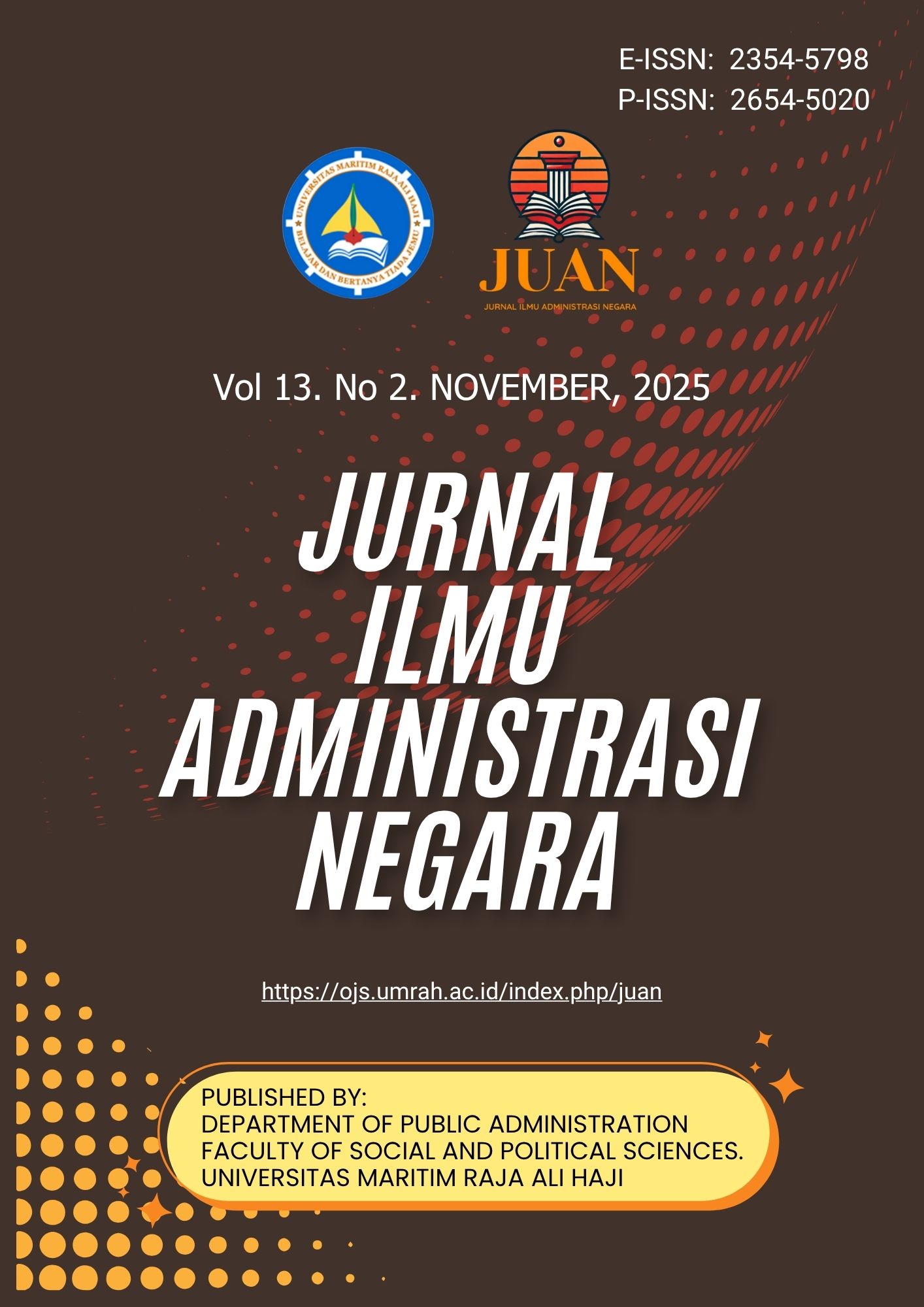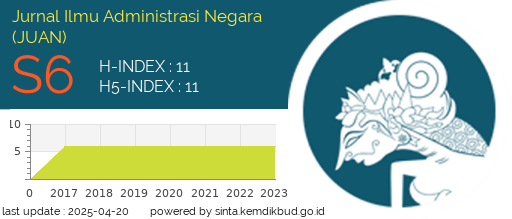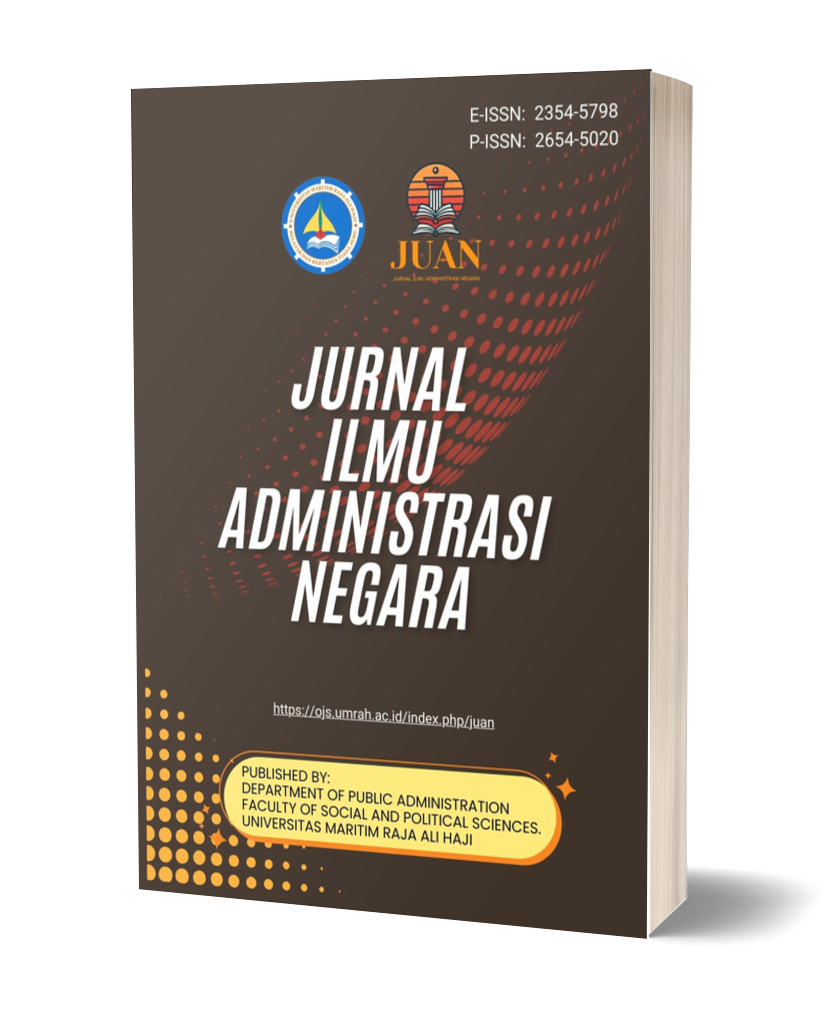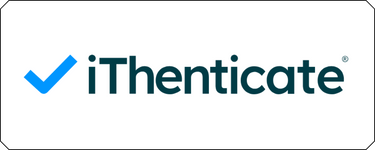Analysis of Women’s Representation in Various Positions and Roles within the Public Sector
DOI:
https://doi.org/10.31629/juan.v13i2.6535Keywords:
Women’s Representation, Public Sector, EmploymentAbstract
The representation of women in high-ranking positions within Indonesia’s public sector remains significantly low, despite the increasing number of female civil servants (ASN) and their comparable levels of education to male counterparts. This situation reflects a persistent gender imbalance in bureaucratic leadership that contradicts the principles of equality outlined in Law No. 5 of 2014 concerning the State Civil Apparatus, which guarantees equal opportunity for all citizens. The purpose of this study is to analyze the level of women’s representation in various public sector positions and to identify the key factors contributing to the underrepresentation of women in strategic leadership roles. The research adopts a qualitative approach using the library research method, employing the theories of Representative Bureaucracy and Glass Walls as analytical frameworks. Data were collected through extensive review of scholarly literature, government regulations, and statistical reports from the National Civil Service Agency (BKN). The results show that over the past three years, male civil servants have dominated senior leadership positions Principal, Middle, and Primary levels comprising approximately 80%, while women account for less than 20%. The findings indicate that the limited representation of women is primarily caused by low interest and self-confidence, limited lobbying ability, gender-based job segregation, and enduring negative stereotypes that associate leadership with masculine traits. The study concludes that gender equality in Indonesia’s bureaucracy is still far from being realized, and achieving representative bureaucracy requires stronger institutional commitment to empowering women, promoting gender-sensitive recruitment, and ensuring equitable access to leadership opportunities in public administration.
Downloads
References
Adlini, M. N., Dinda, A. H., Yulinda, S., Chotimah, O., & Merliyana, S. J. (2022). Metode Penelitian Kualitatif Studi Pustaka. Edumaspul: Jurnal Pendidikan, 6(1), 974–980. Https://Doi.Org/10.33487/Edumaspul.V6i1.3394
Ardiansa, D., Samosir, H., & Setiawan, D. M. (2021). Birokrasi Representatif : Tantangan Dan Peluang Membangun Kesetaraan Pada Jabatan Pimpinan Tinggi Kementerian. September.
Astuti, P. (2017). Peluang PNS Perempuan Dalam Memperoleh Jabatan Struktural: Studi Kualitas Kesetaraan Gender Di Pemerintah Kota Semarang
Badan Kepegawaian Negara. (2020). BUKU STATISTIK PEGAWAI NEGERI SIPIL DESEMBER 2020 - Statistik Pegawai Negeri Sipil|Keadaan : Desember 2020. Badan Kepegawaian Negara, 1–69. Https://Www.Bkn.Go.Id/Wp-Content/Uploads/2021/03/STATISTIK-PNS-Desember-2020.Pdf
BKN. (2022). Statistik Aparatur Sipil Negara, Desember 2022. National Civil Service Agency (NCSA), 85.
Judiasih, S. D. (2022). Implementasi Kesetaraan Gender Dalam Beberapa Aspek Kehidupan Bermasyarakat Di Indonesia. ACTA DIURNAL Jurnal Ilmu Hukum Kenotariatan, 5, 284–302.
Kayatu, M. A., Utha, A., & Yusuf, M. (2022). Daerah Provinsi Sulawesi Tenggara The Role Of Women As Public Officials And Organizational Culture In Supporting The Performance Of Civil Servants In Provincial. 13(1), 54–61.
Kecamatan, D., & Kabupaten, B. (2022). 2911-8864-1-Pb. 6(1), 3558–3568.
Krissetyanti, E. P. L. (2018). Women’s Perceptions About Glass Ceiling In Their Career Development In Local Bureaucracy In Indonesia. Bisnis & Birokrasi Journal, 25(1). Https://Doi.Org/10.20476/Jbb.V25i1.9643
Luckyto, M., Oktaviana, S., & Fu’adah, L. (2021). Analisis Promosi Jabatan Berbasis Kesetaraan Gender Pada Birokrasi Pemerintahan. IJTIMAIYA: Journal Of Social Science Teaching, 5(2), 211. Https://Doi.Org/10.21043/Ji.V5i2.11164
Menteri Pendayagunaan Aparatur Negara Dan Reformasi Birokrasi Republik Indonesia. (2014). Peraturan Menteri Pendayagunaan Aparatur Negara Dan Reformasi Birokrasi No 13 Tahun 2014 Tentang Tata Cara Pengisian Jabatan Pimpinan Tinggi Secara Terbuka Di Lingkungan Instansi Pemerintah. 14.
Meo, E. N., & Boro, V. I. A. (2021). Kesetaraan Gender Dalam Perekrutan Aparatur Sipil Negara Menempati Jabatan Struktural Di Pemerintah Daerah Provinsi Nusa Tenggara Timur. Perspektif, 10(1), 204–210. Https://Doi.Org/10.31289/Perspektif.V10i1.4274
Nofianti, L. (2016). Perempuan Di Sektor Publik. Marwah: Jurnal Perempuan, Agama Dan Jender, 15(1), 51. Https://Doi.Org/10.24014/Marwah.V15i1.2635
Noors, A. I. A. (2019). Analisis Pelaksanaan Seleksi Terbuka Bagi Pengisian Jabatan Pimpinan Tinggi Di Indonesia. Konferensi Nasional Ilmu Administrasi, 3, 1–6.
Purwono. (2008). 25-53-1-SM.Pdf. In Universitas Gajah Mada (Pp. 66–72).
Rahim Abdul. (2016). Peran Kepemimpinan Perempuan Dalam Perspektif Gender. Jurnal Al-Maiyyah, 9(2), 268–269.
Rahmawati, N. A., Widianingsih, I., & Karlina, N. (2023). Representasi Gender Dalam Jabatan Struktural Aparatur Sipil Negara (ASN) Perempuan Di Lingkungan Pemerintah Kota Depok: Perspektif F Glass Walls Theory. Jurnal Administrasi Negara, 14(2), 625–630.
Rahmawaty, P., & Si, M. (N.D.). Di Kota Yogyakarta. 1–14.
Ramdhani, M. (2021). Kinerja Aparatur Sipil Negara Dalam Perspektif Gender Di Direktorat Jenderal Bina Pembangunan Daerah Kementerian Dalam Negeri. Jurnal Renaissance, 6(2), 768. Https://Doi.Org/10.53878/Jr.V6i2.149
Republik Indonesia. (2014). Undang-Undang Republik Indonesia No.5 Tahun 2014 Tentang Aparatur Sipil Negara. 1–104.
Septiana, A. N., & Haryanti, R. H. (2023). Glass Ceiling Pada Pekerja Perempuan: Studi Literatur. Jurnal Ilmu Sosial Dan Humaniora, 12(1), 168–177. Https://doi.org/10.23887/Jish.V12i1.58384
Ulandari, D., Malik, I., & Tahir, N. (2022). Gaya Kepemimpinan Perempuan Dalam Jabatan Publik Dikabupaten Luwu Utara. Kajian Ilmiah Mahasiswa, 3(April). https://journal.unismuh.ac.id/index.php/kimap/article/view/7363
Downloads
Published
Issue
Section
License
Copyright (c) 2025 Mutiara Indah Permatasari, Zulfa Harirah

This work is licensed under a Creative Commons Attribution-ShareAlike 4.0 International License.
You are free to:
- Share — copy and redistribute the material in any medium or format for any purpose, even commercially.
- Adapt — remix, transform, and build upon the material for any purpose, even commercially.
- The licensor cannot revoke these freedoms as long as you follow the license terms.
Under the following terms:
- Attribution — You must give appropriate credit, provide a link to the license, and indicate if changes were made . You may do so in any reasonable manner, but not in any way that suggests the licensor endorses you or your use.
- ShareAlike — If you remix, transform, or build upon the material, you must distribute your contributions under the same license as the original.
- No additional restrictions — You may not apply legal terms or technological measures that legally restrict others from doing anything the license permits.













